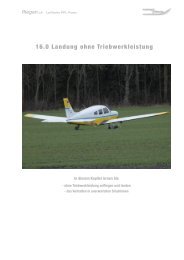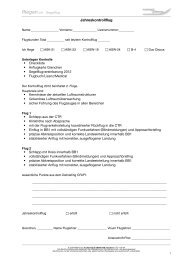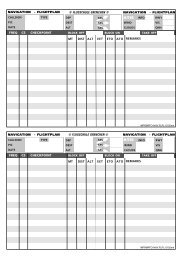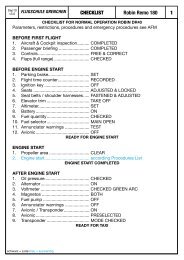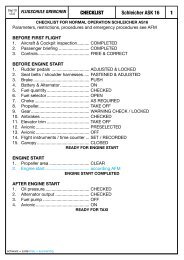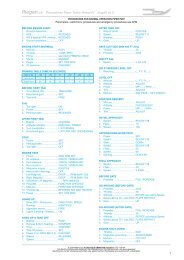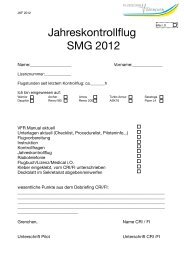400/500 Series Garmin Optional Displays
400/500 Series Garmin Optional Displays
400/500 Series Garmin Optional Displays
Create successful ePaper yourself
Turn your PDF publications into a flip-book with our unique Google optimized e-Paper software.
When an instrument approach is loaded in the active flight plan, the PDA function can provide a<br />
greater margin of safety by alerting for altitude deviations below minimum approach altitudes. Minimum<br />
altitudes are typically known for the segment prior to the final approach fix and for step-down fixes prior<br />
to the missed approach point. Minimum descent altitudes, decision altitudes, and decision heights are<br />
not known for instrument approaches. These minimum altitudes, as shown on instrument approach<br />
procedures, are published as MSL altitudes and flown by reference to barometric altitude provided on the<br />
altimeter.<br />
Non-standard atmospheric conditions, as described in the previous section, may result in differences<br />
between GPS-MSL altitude and Baro-Corrected altitude. These differences may reach a level that can<br />
trigger a PDA when flying the published minimum altitude as indicated on the altimeter. Operations<br />
in below-standard-temperature environments may require the pilot to compensate for the non-standard<br />
temperature by increasing the minimum altitude that is defined in the approach procedure for standard<br />
atmospheric conditions.<br />
Differences between GPS-MSL altitude and Baro-Corrected altitude typically increase as height above<br />
ground level increases due to non-standard atmospheric effects. In response to PDAs, the pilot should<br />
always ascertain the appropriate altitude is being flown in consideration of atmospheric conditions.<br />
Limitations<br />
The TERRAIN function displays altitudes of terrain and obstructions relative to the aircraft’s altitude<br />
and are advisory in nature only. Individual obstructions may be shown if available in the database. Not<br />
all obstructions may be available in the database and data may be inaccurate – do not maneuver or<br />
navigate to avoid obstacles using this information. Terrain information is based on terrain elevation data<br />
contained in a database, which may contain inaccuracies. Terrain information should be used as an aid to<br />
visual acquisition – do not use terrain information to navigate or maneuver to avoid terrain.<br />
Section 1<br />
Introduction<br />
31





